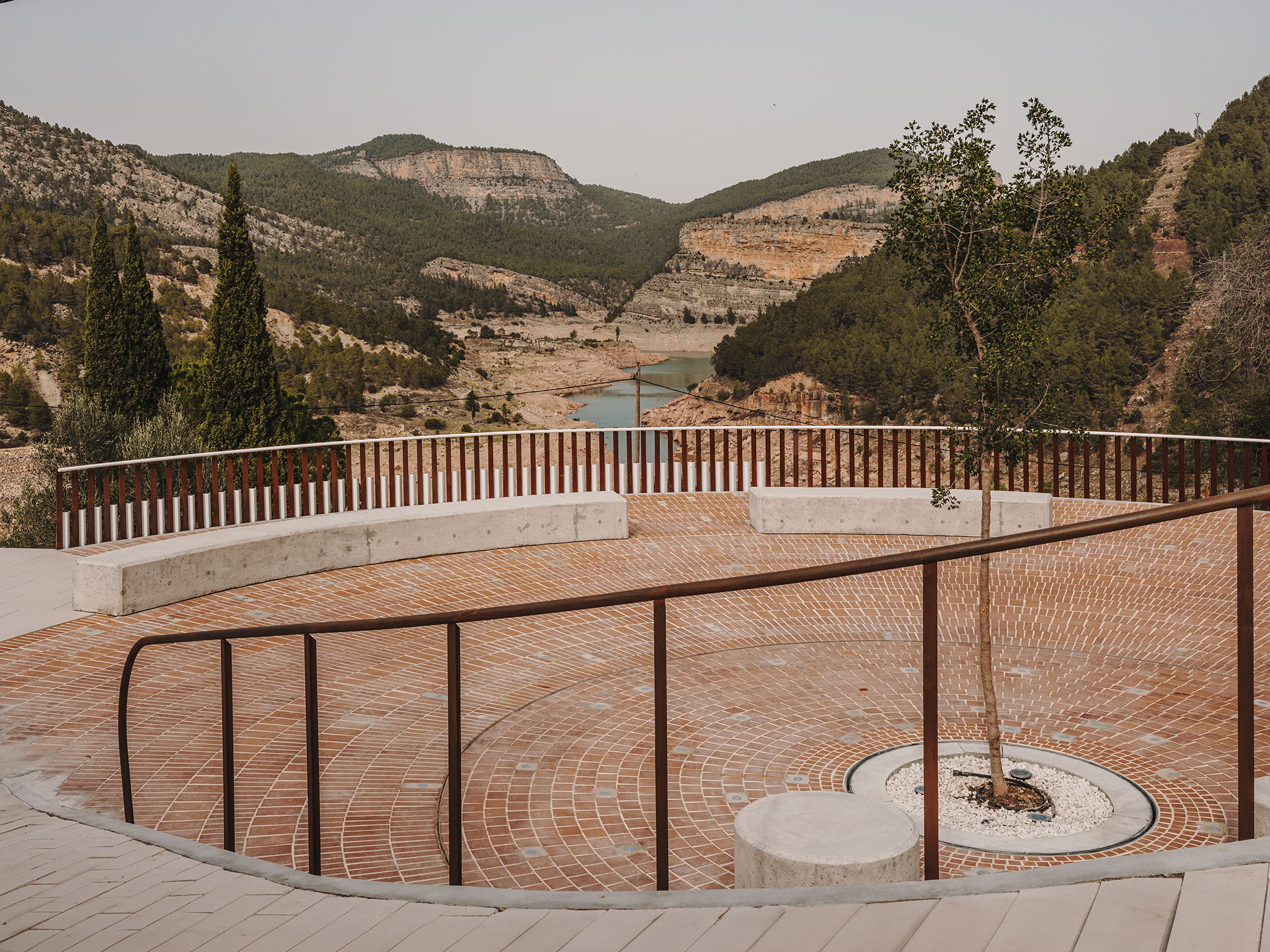
The project developed by Javier López Bautista is arranged in a circular shape around a solitary pre-existing tree, eliminating elements of the plot that limit the view of visitors to contemplate the landscape in its entirety. The combination of different sizes and formats of ceramic pieces creates a pattern that directs the gaze from the centre of the plot towards the landscape.
The ceramic material used in the pavement evokes the idea of a panoramic viewpoint, projecting the visitor's gaze onto the landscape and generating a feeling of harmony between humans and the natural environment. The concrete structure is combined with the ceramic that gently extends to touch the ground, suggesting a deep connection with nature.

The Circular Look by Javier López Bautista. Photograph by Oleh Kardash.
Project description by Javier López Bautista
Located on a small plot south of Puebla de Arenoso, on land that was once a threshing floor in a privileged position, with majestic views of the Mijares River reservoir. That space, full of life, succumbed to the inexorable passage of time. The vegetation claimed the place, covering its memory with a cloak of oblivion, and what was once liveliness was transformed into abandonment.
The Circular View emerges as a response to that oblivion, an attempt to return to that place its lost dignity. Erected on the old threshing floor, this project is not only a refuge for rest, but a space for reflection, a point of pause on the road.
Deeply linked to the landscape, the structure opens up to the surroundings through two clear and symbolic gestures: a circular viewing point and steps that gently descend towards the land.

The viewing point is the heart of the project. At its centre, a solitary Montpellier maple stands like a guardian, unfazed by the passage of time. From this elevated platform, the horizon stretches out without limits, offering views that know no barriers. There are no elements to guide or restrict the gaze; the visitor is free to contemplate the landscape in its fullness, establishing an almost mystical connection with the surroundings. This space seems to escape time, as if the visitor were suspended in a moment of absolute calm.
At the same time, the steps, which gently descend towards the grass, invite a more intimate and earthly experience. While the viewing platform rises towards the ethereal, the steps embrace the earth, in a gesture of proximity. Here, the visitor not only observes, but sits, feels the weight of the ground beneath his feet and lets himself be enveloped by the calm of the place. It is a more direct relationship with the environment, a communion between the human being and the earth that sustains him.
This duality between the elevated and the close is also reflected in the materials. The ceramic flooring, which is the protagonist in both spaces, is used in two contrasting ways. On the viewing platform, extruded stoneware pieces are used in the following formats: 12x12 cm, 6x24 cm, 12x24 cm, 8x32 cm, 12x32 cm in a radial arrangement of ceramics that evokes the ancient movements of the oxen that threshed the grain in that same place. The combination of different sizes and formats creates a pattern that directs the gaze towards the centre, where the maple tree stands as a silent witness.

In contrast, on the steps and the lower platform, the ceramics take on a contemporary form, with larger porcelain stoneware pieces (60x60 cm and 30x60 cm) that seem to merge with the terrain. These elements, with a more abstract appearance, fold gently, like a cloak that unfolds until it touches the ground, suggesting a deep connection with nature. Steel and concrete are combined with ceramics, creating a structure that, despite its manufacture, retains an artisanal feel. The imperfections of the construction process are not defects, but marks that give the space authenticity.
La Mirada Circular is more than just an architectural space. It is a dialogue between what was and what is, a reconciliation between memory and the present. Here, the ethereal and the earthly meet, inviting the visitor to stop, to look, and to feel the echo of time in the surrounding landscape.

































